
TARGET 100908
Modern Day Argonauts
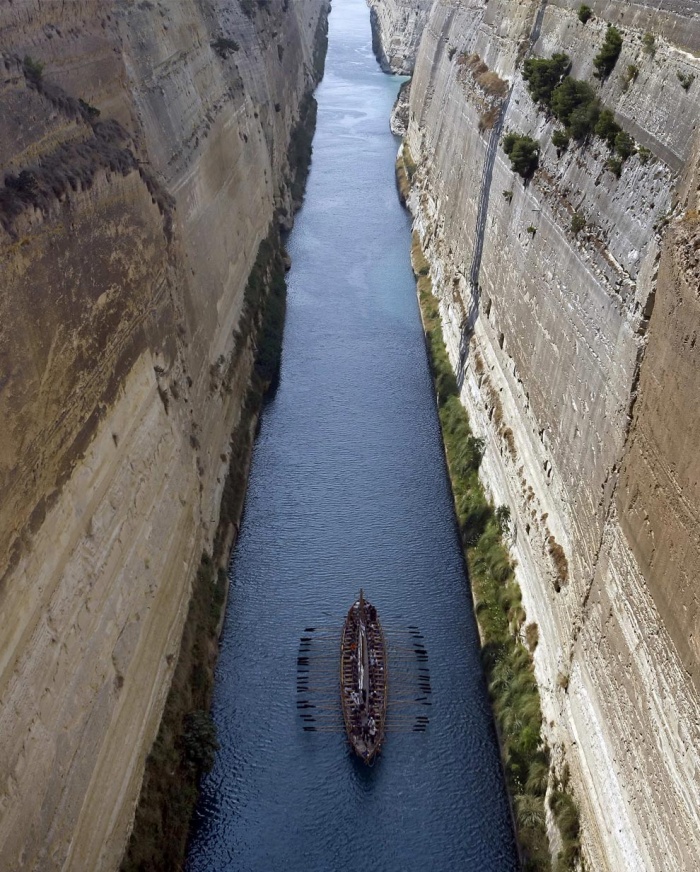
A modern reconstruction of the Argo, the ship from the story of "Jason and the Argonauts" sails through a narrow channel on its reinacted journey.
Volos, Greece — A replica of the Argo, the ship that according to legend carried Jason and the 50 Argonauts in search of the Golden Fleece, sailed Saturday, June 13, 2008 from the central Greek city of Volos on a two-month journey to Venice in Italy.
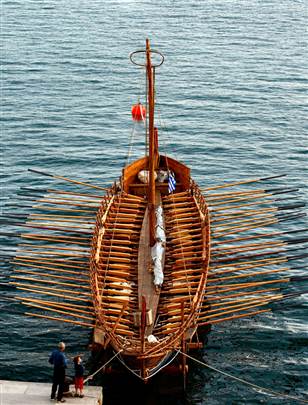
A man and a child look at the Argo replica ship docked at the port of Volos in central Greece, 200 miles (320 kilometers) north of Athens.
One of the world’s most fascinating legends is Jason and the Argonaut’s journey for the Golden Fleece. Now there are those who want to retake the unbelievable journey in an identical wooden ship.
A replica of the Argo has been built according to the known designs for warships in the Mycenaean era, equipped with a ram used to break the hull of enemy ships.
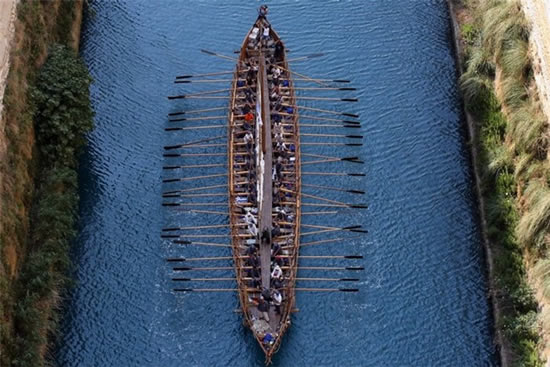
The ship and its crew
The replica Argo carried 50 oarsmen with another 22 standing by on a ship sailing behind it. The modern argonauts spent around 2 months at sea, sailing 2000 nautical miles (3700 km) and arrived in Venice, Italy on August 11.
Unfortunately, they weren't able to follow the journey of the original Greek heroes. Turkey refused to guarantee safe passage for the 28.5 meters long ship through the Bosporus Strait, so the adventurers were not able to reach the city of Colchis, in modern Georgia. They did, however, retrace part of the argonauts return voyage.
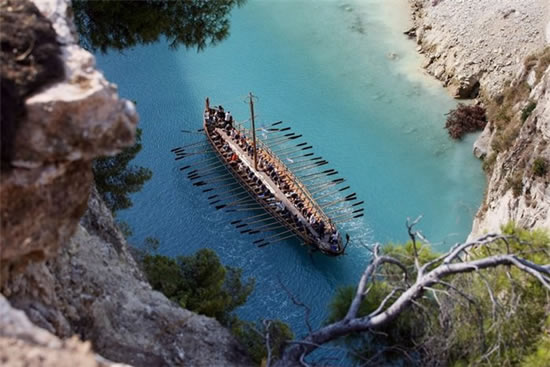
A pause on the trip
The Argo, as well as its replica is a type of ship called a penteconter. It was an ancient Greek galley in use since the archaic period.
The penteconters emerged in an era when there was no distinction between merchant and war ships. They were versatile, long-range ships used for sea trade, piracy and warfare, capable of transporting freight or troops. A penteconter was rowed by fifty oarsmen, arranged in two rows of twenty five on each side of the ship. A midship mast with sail could also propel the ship under favourable wind. Penteconters were long and sharp-keeled ships, described as long vessels. They typically lacked a full deck, therefore they were also called unfenced vessels.
According to contemporary calculations, penteconters are believed to have been between 28 and 33 meters long, approximately 4 meters wide and capable of reaching a top speed of 9 knots (18km/h). The penteconter remained in use until the Hellenistic period, when they became complemented and eventually replaced by other designs.FEEDBACK MAP
The targeted location is of Volos, Greece, from which the trip began, and at which the return trip ended.
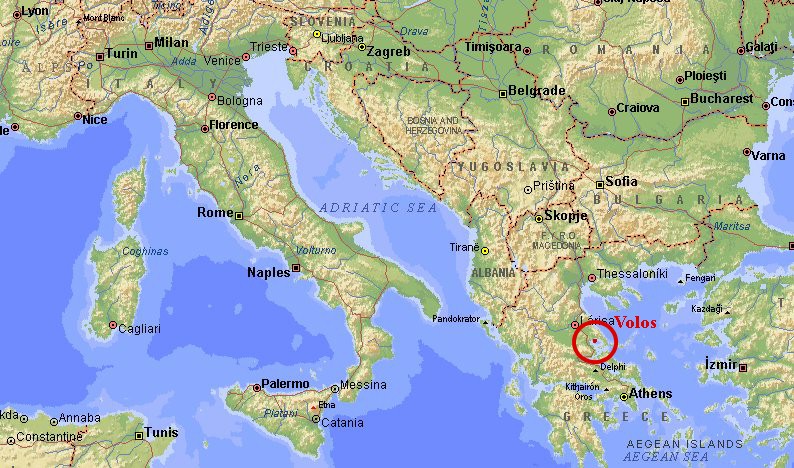
To learn more about the reinactment of the trip of the Argo, take a look at the following web sites:
MSNBC
Wikipedia (on Penteconter ships)